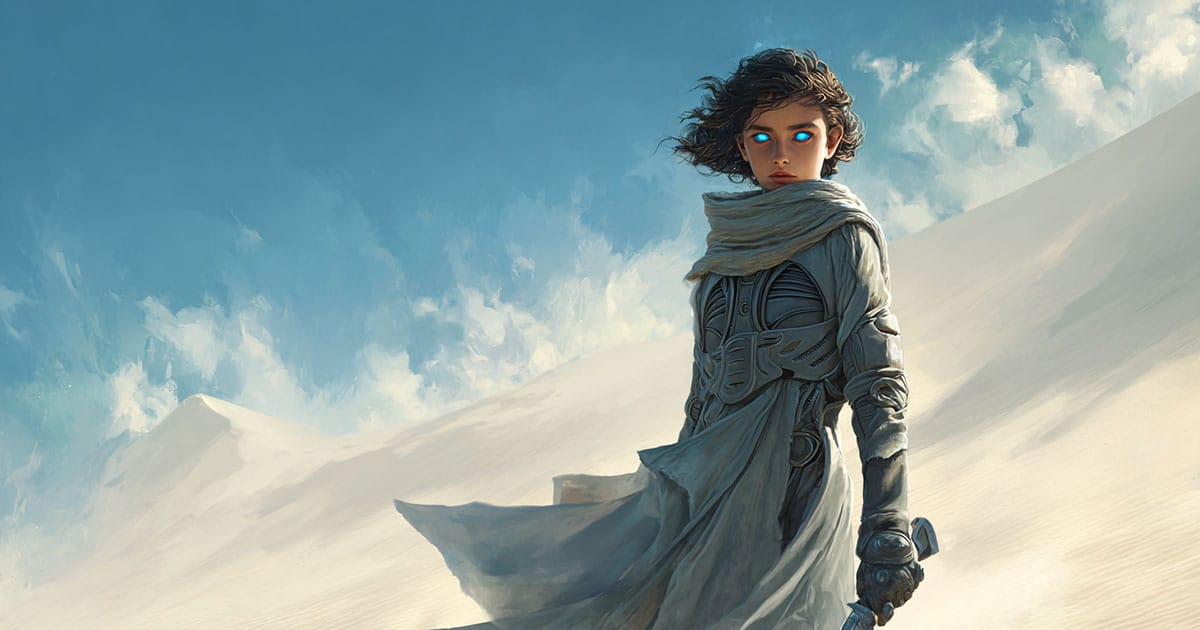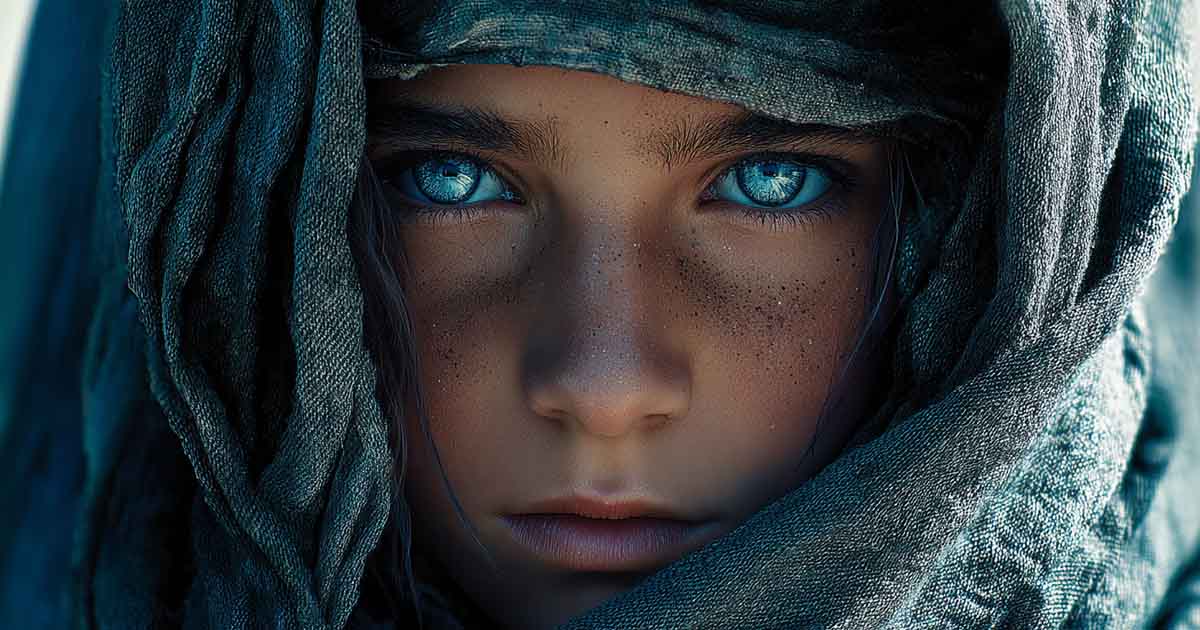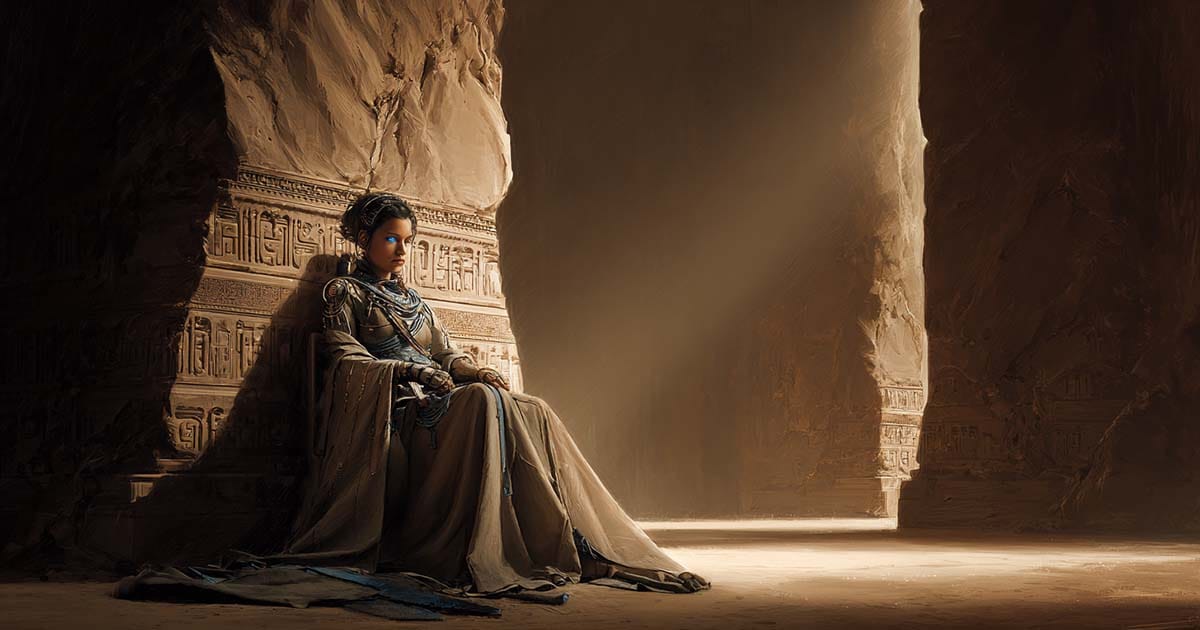Alia Atreides A Tragic Child of Dune
Alia Atreides, Paul’s younger sister in Frank Herbert’s “Dune,” is a tragic figure. Born with ancient memories, she rises as saint and regent before falling to inner corruption and death.

Alia Atreides: A Child of Memory and Tragedy
Alia Atreides is one of the most unsettling and unforgettable figures in the "Dune" saga. She enters the story as Paul Atreides’ younger sister, but her life is shaped by choices made before she was even born.
In a series filled with visionaries, prophets, and rulers, Alia is different. She is born with the full awareness of generations past, a gift that becomes a curse.
For readers of classic science fiction, she represents both the wonder and the terror of Herbert’s universe. Her story asks us to consider the weight of memory, the cost of prophecy, and the limits of human will.
Origins and Context
Alia’s story begins with her mother, Lady Jessica, and the Water of Life ritual. When Jessica took the deadly poison to become a Reverend Mother, she was already pregnant. The result was a child awakened in the womb.

Alia entered the world with the wisdom and memories of countless women before her. This condition, called pre-born, was regarded by the Bene Gesserit as a dangerous abomination. They feared such children because their identities were fragile and open to manipulation by the voices of their ancestors.
Yet among the Fremen of Arrakis, Alia’s strange gifts carried a different meaning. They saw her as a holy child touched by prophecy, even as her own family worried about the dangers within her.
Role in the Story
In "Dune," Alia appears as a four-year-old child already carrying adult awareness. Born eight months after Duke Leto’s death, she is raised among the Fremen.
After Jessica ingests the Water of Life while pregnant, Alia emerges with Other Memory and truth-sense powers. During the battle for Arrakeen, she kills Sardaukar and Harkonnen soldiers with a crysknife, earning her the title Saint Alia of the Knife.
In "Dune Messiah," her role shifts. With Paul blinded and stepping away from the rule, Alia holds the regency for his children, Leto II and Ghanima. She is both a political ruler and a religious icon. She must balance loyalty to Paul’s vision against the expectations of the Fremen, the Bene Gesserit, and court factions. Her internal struggle with ancestral voices becomes more intense.
By the time of "Children of Dune," the warnings prove true. The ego-memory of Baron Vladimir Harkonnen overtakes her mind. She rules harshly, becomes tyrannical, and loses her hold on her identity. In the end, rather than allow complete possession, she takes her own life by leaping from a high window.
The Meaning of Pre-Born
To understand Alia, one must understand the concept of the pre-born. In Herbert’s world, Reverend Mothers awaken to Other Memory only after years of training.
A pre-born child, awakened before birth, carries the same weight without the maturity to control it. This makes them vulnerable to ancestral voices, who may seize control of their identity.
Alia represents both the potential and the peril of this condition. She shows what happens when wisdom is inherited too soon, when memory outweighs selfhood. Herbert uses her to warn of the dangers of knowledge without grounding and power without stability.

Saint Alia of the Knife
The Fremen called her Saint Alia of the Knife, a title earned in blood. In their culture, religion and survival are bound together. A child who fights and kills enemies of the tribe is more than human—she is a figure of awe. Yet Herbert uses this title ironically. Alia is both saint and abomination, savior and doomed child. Her sainthood reflects the Fremen's need for symbols of divine power, even when the truth is far more complex. For readers, the title serves as a reminder of how religion can elevate individuals beyond reason, masking the inner struggles they face.
Adaptations on Screen
Alia’s story has been told on screen in very different ways. In David Lynch’s 1984 film, she appears as a child warrior, almost a supernatural figure, with less focus on her inner conflict.
The Sci-Fi Channel miniseries of 2000 and 2003 gave her more depth, showing her regency and downfall with psychological weight.
Denis Villeneuve took a different approach in his 2021 and 2024 films. In these, Alia appears mainly in visions, portrayed as an adult even before her birth.
This choice shifts her presence into the symbolic realm, keeping the audience aware of her importance while saving her full arc for later stories. Each version highlights different aspects of her character, but none capture the full depth of Herbert’s creation.
Enduring Themes and Lessons
Alia’s life is a cautionary tale about the dangers of inherited power. She was given too much too soon—memory, wisdom, and authority without the foundation to wield them safely. Herbert uses her story to illustrate how identity can be eroded by history, how unchecked power can lead to destruction, and how prophecy can become a trap rather than a guide. For fans of classic science fiction, her arc serves as a poignant reminder that even the most gifted individuals remain human, subject to weakness. Alia’s tragedy is not that she lacked strength, but that her gifts carried seeds of her downfall from the very beginning.
Source List
- "Dune" (1965)
- "Dune Messiah" (1969)
- "Children of Dune" (1976)
- Alia Atreides – Dune Wiki
- Alia Atreides – Wikipedia
- ScreenRant – Alia Explained
- Sci-Fi Channel Miniseries (2000–2003)
- Villeneuve’s "Dune: Part Two" (2024)

